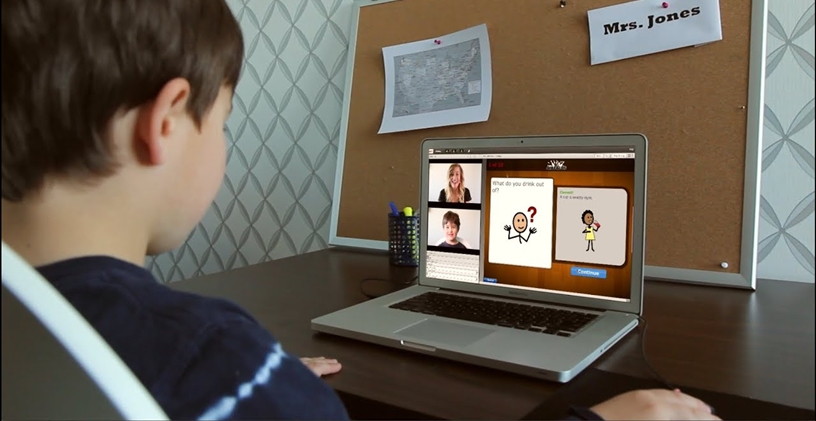Children with Hearing Impairment

Today, it is undeniably accepted that education after instrumentation is also important in addition to early diagnosis and instrumentation for children with hearing loss to acquire language. The importance of early intervention has been understood for many years (Calderon and Naidu, 1998; Childress, 2004; Watkin et al., 2007), and post-instrumentation early education practices are carried out both in private rehabilitation centers and in education and research centers affiliated to universities in our country.
As in all fields, the field of early special education has not remained the same since its inception, and has undergone changes over time based on the application and research results. The approach adopted in early special education practices in the 1970s and 1980s was that the educator tried to teach the child the language and speaking skills in structured education sessions by working directly with the child, and the parents applied these techniques at home. In these so-called child-centered approaches, parents attend family education sessions as observers. Families learn their work at home by watching the educator, and implement the structured plans prepared by the educator at home (Dunst, 2002; Dunst, Hamby, & Brookfield, 2007; Mahoney, 2009).
Since the late 1980s, the role given to parents in the child-centered approach has been discussed, and it has been suggested that parents should take a more active and participatory role in their children’s education (Dunst, Trivette, Davis, & Cornwell, 1988; Kaiser & Hancock, 2003; Mahoney) ; 2009; Mahoney and Wheedan, 1997; Mahoney and Wiggers, 2007).
With this approach, which is called family-centered, early education has undergone significant changes. The aim is still to develop the child’s language and speech skills. The reason families and educators come together is the child. However, in teaching these skills to the child, the educator’s working with parents and developing the teaching skills of the parents prevented the educator from trying to develop the child’s language skills by working only with the child. According to this family-centered approach, it is considered more important to support the strengths of the family by establishing cooperation with the family and to increase the capabilities of their children regarding their education, than teaching certain skills to the child by working only with the child (Brown & Nott, 2005; Childress, 2004; DesJardin, 2006; DesJardin). , Eisenberg & Hodapp, 2006; Hintermair, 2006; Mahoney, 2009).
The family-centered perspective derives its theoretical foundations from Vygotsky’s work (Brown & Nott, 2005). Vygotsky clarifies three important issues in development (Vygotsky, 1986). The first of these emphasizes that the early development of the child takes place within his or her own cultural group, especially family. Development occurs within the community where growth takes place, when the child participates in the activities and practices of this community (Brown and Nott). Unlike Piaget, who sees development as an internal process in which the child absorbs and adapts by interacting with the outside world, Vygotsky places more emphasis on the child’s participation in activities with other members of the community. From this point of view, the focus in development is not the child as an individual, but the child in context (Brown and Nott). The second premise discussed by Vygotsky is that learning experiences are the result of interactions with a more experienced individual, usually a parent or caregiver. Thirdly, Vygotsky introduces the concept of "sphere of proximal development". Proximity development is defined as the developmental difference between what the child can do on his own and what he can do with the help of an adult or teacher. For this reason, for effective learning, the adult should set goals just above the skills that the child can do and grasp. In such a situation, the tasks of the adult can be listed as determining the child’s current developmental level, knowing the next step in development, and effective teaching techniques that the child can use to take his / her daily experiences, interests, capabilities, motivation and development to the next level (Brown & Nott; Childress, 2004; Cole and Flexer, 2007; Dunst, 2002; Evans and Robinshaw, 2000).
It is seen that similar tendencies appeared in the theories of child language acquisition, especially in the 1970s and 1980s. In this period, research focused on mother / father-infant interaction in order to determine the interaction characteristics that affect the child’s language acquisition speed (Bruner, 1982; Cross, 1977; deVillier & deVillier, 1978; Snow, 1984; Stern, 1977). Most of the topics focused on interaction consist of the adult’s control of speech topics, the expansion of the child’s communicative behavior, and the guidance on the use of language. With the evaluation of the information obtained from the studies, the development and language acquisition approaches that provide the family with the activities that constitute the context for the child’s learning in the first years of life and the family members as the child’s first educators have started to emerge. During this period, studies were also initiated to examine the interaction between children with hearing loss and their parents (Bloom & Lahey, 1978; Clark, 1978; French 1971; Kretschmer & Kretschmer, 1982).
Kaynakça
This article is published by Assoc. Dr. Zerrin TURAN. You can find the original version here.







